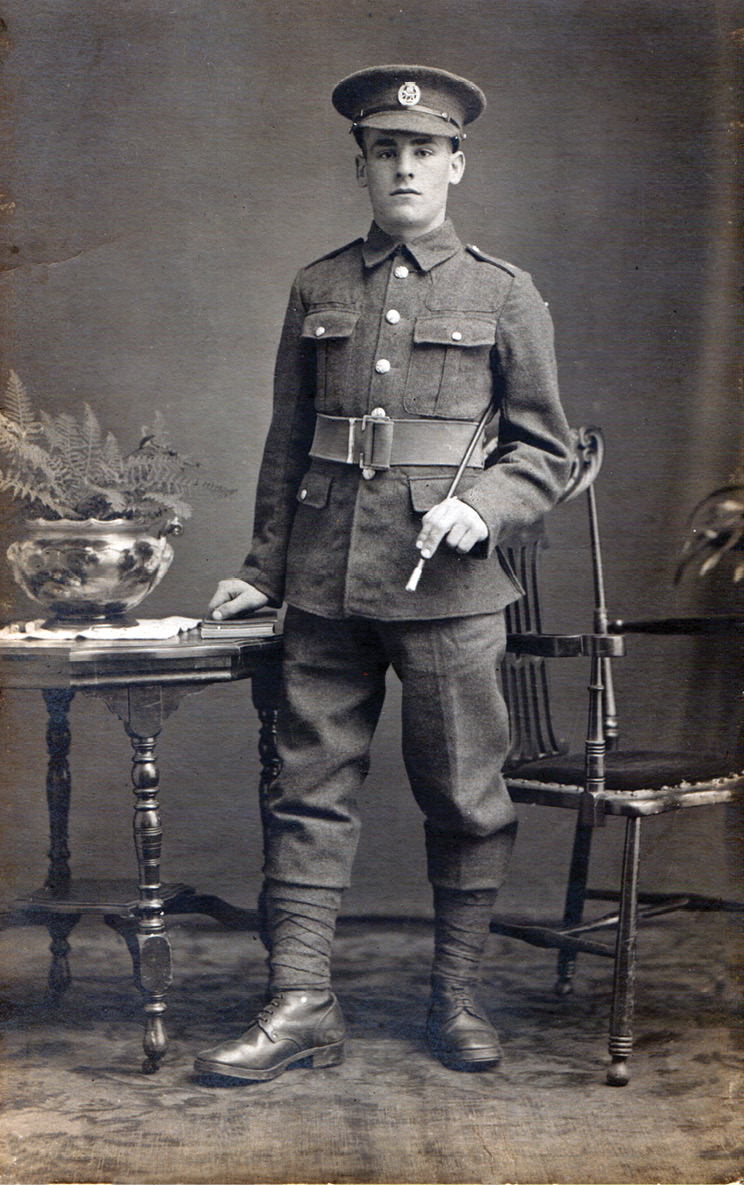14
Khaki uniform

THE SYMBOLISM OF the movement from red coat to khaki jacket in the British Army serves as a metaphor for the transition from the choreographed warfare of the Napoleonic times to the wholesale butchery of modern warfare. The change from a conspicuous uniform to one that blended with the battlefield was one that was widely considered in all the dominant armies of Europe at the turn of the nineteenth century. The “field gray” (Feldgrau) of Germany, “pike gray” (Hechtgrau) of Austria, and “khaki” of Britain were all responses to the need for anonymity on the battlefield.
Prior to the Anglo-Boer War of 1899–1901, the British soldier had worn the red coat, which, coupled with the white, pipe-clayed, leather equipment of the time, made Tommy somewhat conspicuous. The need to blend into the veldt was recognized early on in South Africa, where the dun-colored cotton khaki drill had been issued; this was seen to be inadequate, as it was not hard-wearing and was not warm enough in the cooler periods. As such, a wool serge version was produced that was to be embodied in Army Orders in 1902 as service dress. Service dress went through several modifications in the “Lists of Changes” issued periodically by the War Office, but by 1914 it had settled down to a pattern that was used more or less throughout the war, issued from 1907 onward.
The British 1902 service-dress jacket illustrated here was worn by a lance corporal in the Honourable Artillery Company in 1917–18. Its design and development were the products of a basic military requirement to have a comfortable and serviceable uniform that would be suited for field conditions in all weather. The jacket was meant to be loose-fitting (if it fitted at all—a fact not lost on contemporary cartoonists), with a turned-down collar, patches at the shoulder to bear the extra wear from the position of the rifle butt in action, and pleats to improve fit to the rear of the jacket. It had a pair of box-pleated patch pockets with button-down flaps at the upper chest and a pair of deep pockets let into the tunic skirt, again with button-down flaps. A simple pocket was also sewn into the inside right skirt of the tunic to take the soldier’s first field dressing. Two brass hooks, often removed or lost through use, were intended to support the belt in its correct position between the sixth and seventh tunic button. Shoulder straps bore regimental insignia in the form of brass or, later, as brass shortages were felt, cloth shoulder titles. Throughout the war, insignia were added to the sleeves, including rank badges, specialist proficiency badges, and so-called battle patches and divisional insignia.
The khaki uniform was worn in the trenches, on parade, and while home on leave. Worn and dirtied, typically it would become infested with lice while in the trenches—an inevitable consequence of the close quartering of men in squalid conditions. Brushed down and repaired, this jacket would be worn with pride—and would be instantly recognizable, emblematic of the “man from the trenches.”
